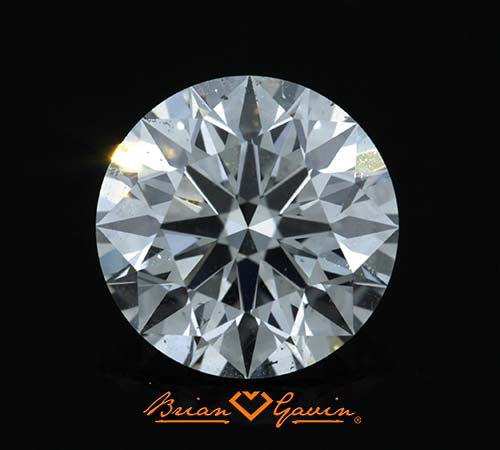
How much does diamond clarity affect brilliance?
Danny, I’m in the process of shopping for a diamond engagement ring and have decided that Brian Gavin Diamonds is the way to go, since I really want the diamond to look incredible! Every review that I’ve read about Brian Gavin Signature round diamonds seems to indicate that they sparkle like crazy! The part that I can’t figure out is what effect does the clarity of a diamond have upon the brilliance? There are two diamonds which are within my budget, which seem to be cut about the same, but one is this 1.318 carat, G color, VVS-2 clarity, Brian Gavin Signature round, and the other is a 1.528 carat, G color, SI-1 clarity, Brian Gavin Signature round. I’m really tempted to go with the SI-1 because it is about $7k less, and thus enables me to buy a more elaborate setting, but the inclusions look really visible in the clarity photograph and I’m worried that they will block out some of the light being returned by the stone. – B. Schwartz
What degree of magnification is used to clarity grade diamonds?
The first thing to realize about the clarity photographs and high resolution video which we provide on the diamond details pages for diamonds like the 1.528 carat, G-color, SI-1 clarity, Brian Gavin Signature round diamond which is pictured to the left, is that you’re looking at the diamond as seen using a level of magnification which is significantly higher than the industry standard of 10x magnification which is used for diamond clarity grading. In real life, the average outside diameter of this diamond is around 7.4 millimeters, but you’re looking at it about the size of a golf ball here…
And the picture provided on the diamond details page is significantly larger, more like the size of a baseball, which is what? According to Wikipedia, a baseball has an average outside diameter of about 75 millimeters, which is roughly ten times the actual size of the diamond!
Reportedly, the thickness of a dime is about 1.35 mm, so if you were to stack together five dimes and hold them up sideways to the full size clarity image provided for this diamond, you’d have a pretty good idea of the actual diameter of the diamond, as compared to the blown up image of the diamond which we provide so that our customers can get a good idea as to the inclusions present within the diamond.
I literally just held the water glass which is sitting on my desk up to the full size clarity photograph, with the base of the glass positioned so that it fits flat against my computer screen, and the outside diameter of the glass is about the same size as the diamond on my monitor… so of course the inclusions are going to be really visible from this perspective!
Now that you have a better concept as to how the diamond faces-up in the real world, imagine how truly small and insignificant the inclusions within the diamond actually are when they are not being blown out of proportion… they are not likely to have any real effect upon the volume of light return, or the brilliance of the diamond, and thus the decision to choose one diamond over the other truly comes down to a matter of personal preference pertaining to the difference in carat weight and clarity, the latter of which will only be discernible when the diamond is viewed using 10x and higher magnification.




















